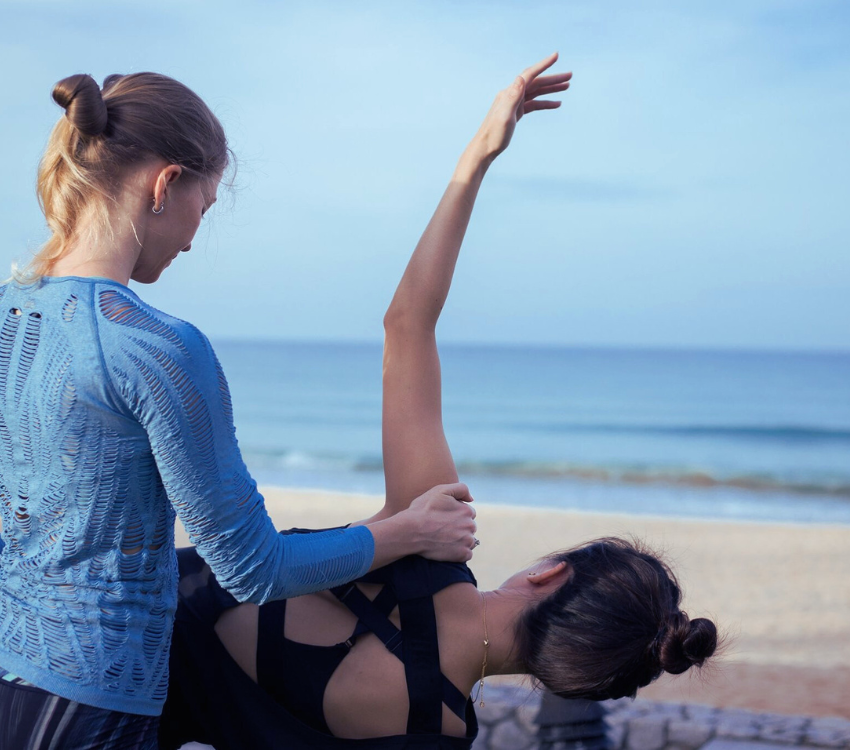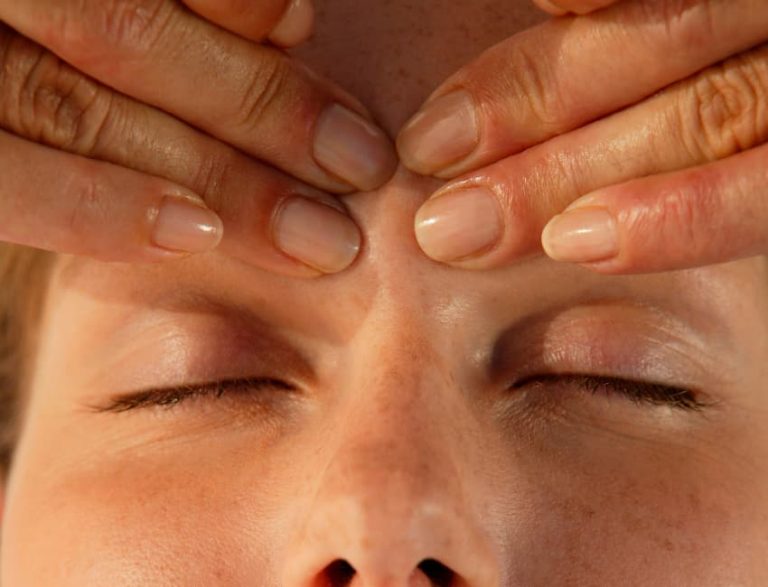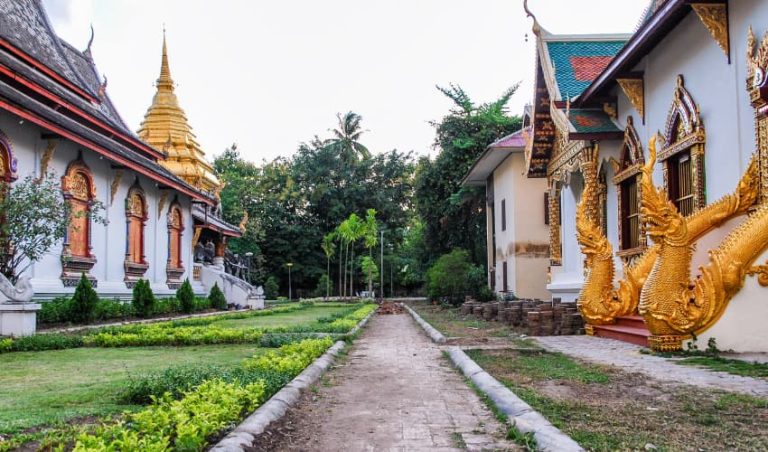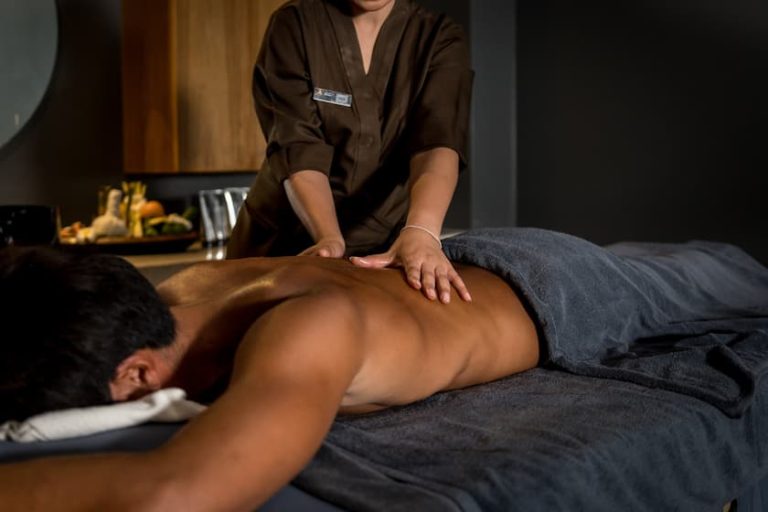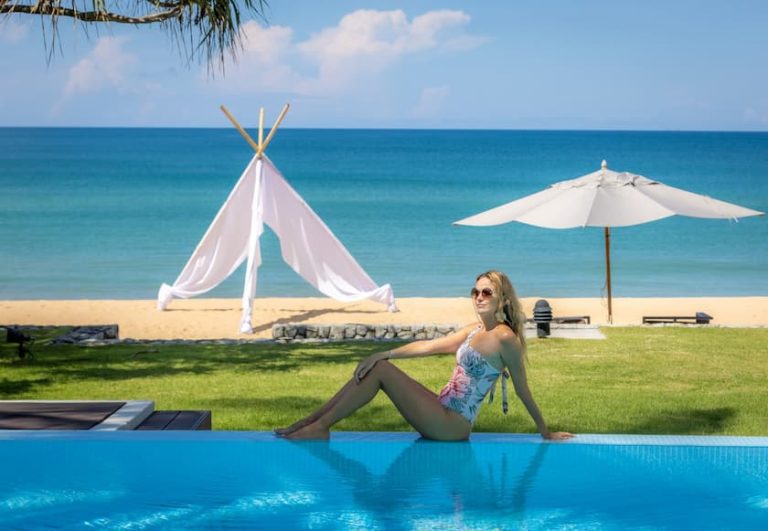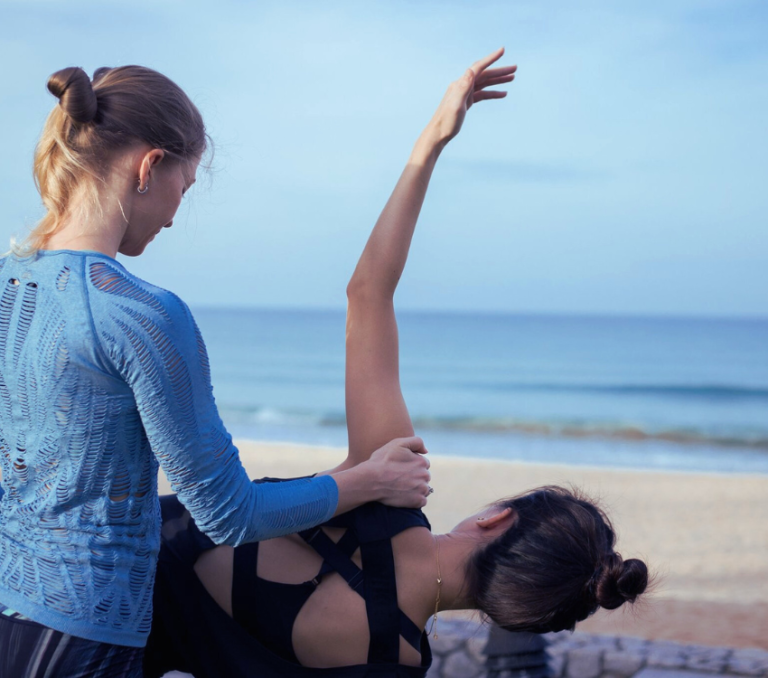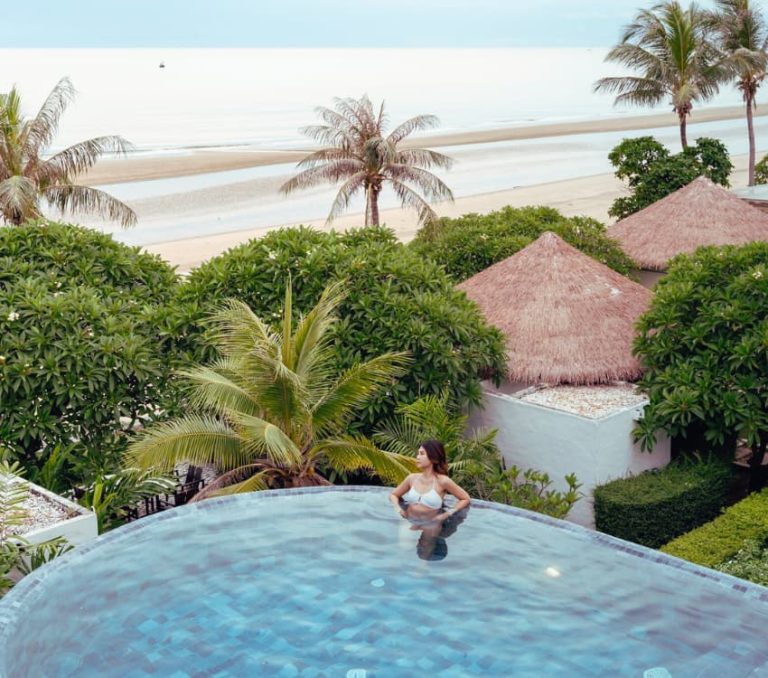At Aleenta Hua Hin – Pranburi Resort & Spa, we often witness the quiet power of slowing down. There’s something moving about watching someone reintroduce themselves to their body—not through intense effort or discipline, but through softness, curiosity, and presence.
Somatic Yoga offers that experience. It’s not about stretching or strength but sensation, awareness, and reset of the nervous system. In a world full of noise and performance, it provides something profoundly different: a way home to yourself.
Somatic Yoga
Somatic yoga is a gentle, internal approach to movement that blends the philosophy of yoga with the neurophysiological focus of somatics. Rather than concentrating on how a pose looks, somatic yoga encourages you to feel into your body and move from that inner sense of knowing.
Each movement becomes an exploration. Rather than trying to perfect a posture, the practice invites you to notice how you carry tension, how you release it, and what it feels like to move without force. It’s less about achieving and more about remembering how to move with ease, rest, and listen.
The Roots of Somatic Practice
While yoga has a long and ancient history, the somatic elements in this practice are more recent. “Somatics” comes from the Greek soma, meaning “the living body.” It was popularised in the 1970s by Thomas Hanna, who developed Hanna Somatics, a system for retraining the nervous system through conscious movement.
Somatic yoga draws from Hanna’s work and traditions, such as the Feldenkrais Method and Alexander Technique. These methods share an understanding that many of our physical problems stem not from injury, but from ingrained muscular habits and unconscious patterns. Somatic movement brings these patterns into awareness so they can be gently rewired.
Somatic Yoga Differs from Other Styles
Unlike more familiar yoga styles where postures are often held or shaped externally, somatic yoga is led entirely by sensation. Movements are typically done on the floor, slowly and with attention, usually repeating gently several times. There is no goal to reach and no pressure to “get it right.”
It’s less performative and more experiential. The key focus is how it feels in the moment, whether tightness, softness, holding, or release. It’s more interactive with the nervous system than passive stretching or stillness-based practices.
At its heart, somatic yoga teaches the art of not pushing. Instead, it’s about allowing the body to show you the way.
Somatic Principles
Several foundational concepts set somatic yoga apart and shape its therapeutic value:
- Interoception: the awareness of internal sensations—your heartbeat, breath, muscle tightness, comfort, or tension. Developing interoception helps rebuild trust between mind and body.
- Pandiculation: a natural movement we often see in animals—stretching, yawning, releasing. It’s the body’s innate way of resetting muscle tone. In somatic yoga, we recreate this movement consciously to dissolve habitual contraction.
- Neuromuscular repatterning: re-educating the brain-body connection through controlled, mindful movement. This helps shift long-held muscular patterns that may contribute to pain or fatigue.
- Sensory awareness: developing the skill of noticing physical sensations without judgment. The more aware we are, the more choices we have regarding responding.
- Embodiment: not just thinking about the body, but living through it—fully inhabiting our experience moment by moment.
Benefits of Somatic Yoga
For the Body
Somatic yoga can help release chronic muscular tension that’s often stored unconsciously. Many of us hold tightness in the neck, shoulders, back, and hips—not due to injury, but from repetitive stress and daily habits. By resetting muscle tone through conscious movement, the body begins to restore ease.
This practice supports:
- Improved posture
- Greater mobility
- Reduced pain from overuse or strain
- Recovery from physical and emotional trauma
For the Nervous System
Somatic yoga works harmoniously with the parasympathetic nervous system, helping shift the body into “rest and digest” mode. Unlike fast-paced exercise or overstimulation from screens, this practice offers the body the conditions to calm and repair itself.
Breath becomes slower. Thoughts quieten. The sense of being “on edge” begins to soften.
For Emotional Wellbeing
Because so many emotions are stored in the body, moving with awareness can invite emotional release. This isn’t forced—it’s simply the result of giving space to feel. For many, this practice restores a sense of safety, especially if they’ve felt disconnected from their body for a long time.
Inside a Somatic Yoga Session
A typical session unfolds gently. You may begin by lying on a mat with your eyes closed, simply noticing your breath or scanning your body for sensation.
Movements are often small and slow. An instructor might guide you to lift a shoulder and slowly lower it with full awareness, repeating it several times before resting and observing the aftereffect. There might be rolling, spiralling, or gentle rocking movements—all designed to help the body release tension and restore natural alignment.
Pauses between movements are common. These moments of stillness allow the nervous system to integrate what’s been felt and learned.
There’s no music, mirrors, or pressure, just you, your breath, and the gentle invitation to feel.
Meeting the Body Where It Is
This practice is welcoming to all. It’s especially supportive for:
- Those recovering from injury or physical strain
- People experiencing stress, burnout, or anxiety
- Individuals dealing with chronic tension, fatigue, or sleep issues
- Anyone wanting to reconnect with their body in a gentle, non-judgmental way
- Yoga practitioners interested in internal experience over external form.
Because somatic yoga doesn’t rely on flexibility or strength, it’s accessible at any stage of life. And because it respects the body’s pace, it often feels grounding and freeing.
Somatic Yoga vs Restorative or Yin Yoga
It’s common to confuse somatic yoga with other gentle practices like Yin or Restorative Yoga, but they serve different functions.
- Restorative yoga uses props to support the body in long-held, passive shapes for deep rest.
- Yin yoga involves holding stretches to target the fascia and connective tissues.
- By contrast, somatic yoga is active, though very gentle. It works directly with the brain and nervous system, using movement to release patterns of tension and create new ones.
There’s no holding of postures. No fixed sequences. Just responsive, intelligent movement from within.
A Practice That Begins Wherever You Are
The beauty of somatic yoga is that it can begin anywhere. You don’t need a teacher in the room—though guidance helps initially. All you need is a quiet space, a soft surface to lie on, and a willingness to listen.
We suggest starting with 10–15 minutes at a time. Let your breath lead you. Let your curiosity be more significant than your judgment.
This is a practice that unfolds slowly, but offers shifts that last.
Somatic Yoga at Aleenta
Here at Aleenta Hua Hin – Pranburi Resort & Spa, somatic yoga has become an integral part of our approach to embodied well-being. It supports our belief that slowing down is not a luxury but a return to something essential.
Many of our guests arrive carrying more than luggage: tension in the shoulders, a tight jaw, and fatigue behind the eyes. With each session, we witness the gentle undoing of that weight—one breath, one movement at a time.
We incorporate somatic yoga into various wellness retreat experiences, including The Journey Within Retreat, which complements practices like meditation, journaling, and therapeutic massage. But even outside a formal programme, we believe the practice itself is a teacher—one that always meets you exactly where you are.
It’s not flashy. It’s not forceful. But it is, in its quiet way, profoundly healing.
Related Articles
- On the Beach Retreats in Hua Hin
- Yoga Retreat in Hua Hin
- Digital Detox for Your Health in Pranburi
- Holistic Herbal Holidays in Hua Hin
- Detoxify and Revive Your Body in Pranburi
Aleenta Hua Hin
Pranburi Resort & Spa
Pranburi Resort & Spa

